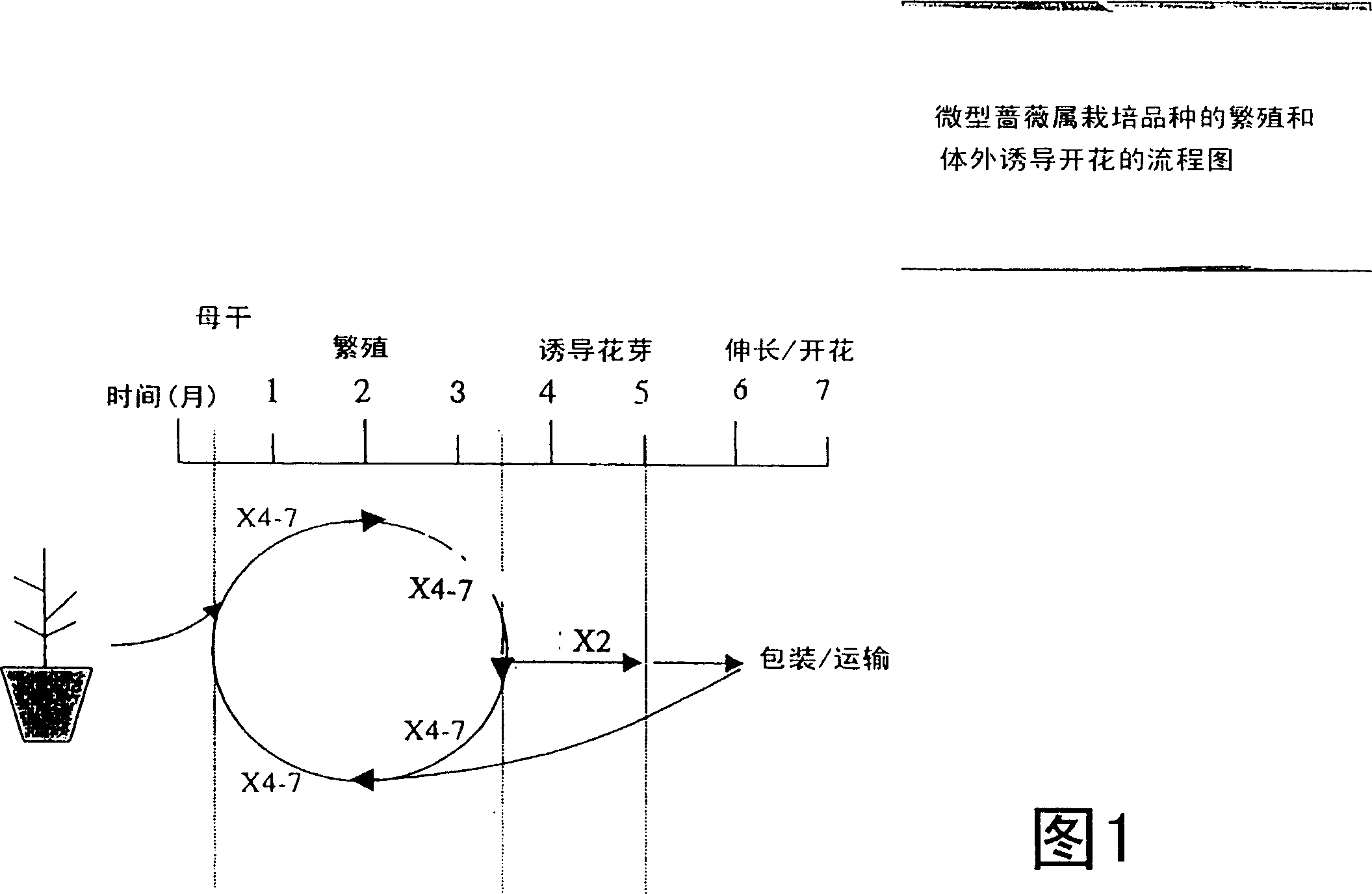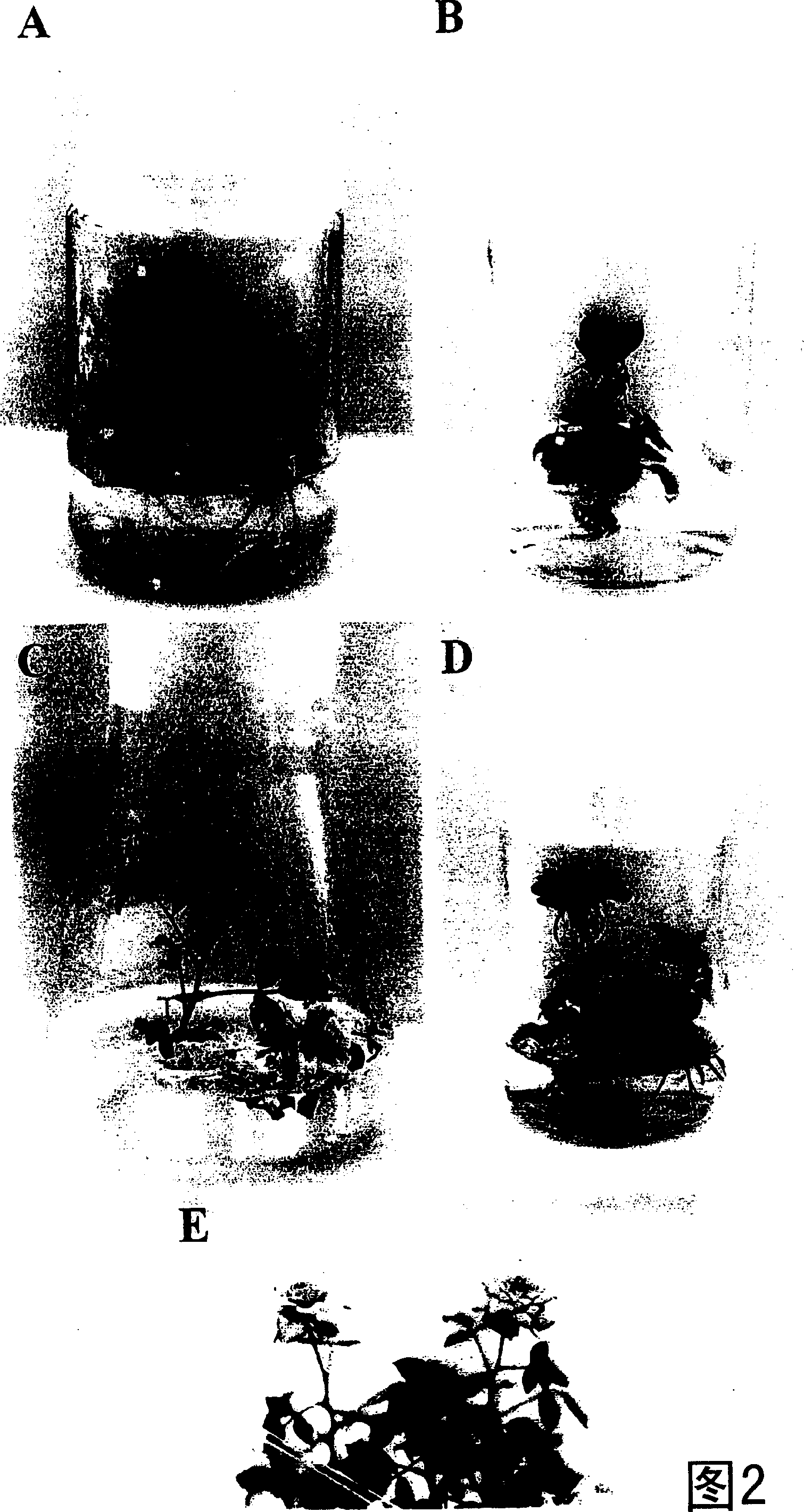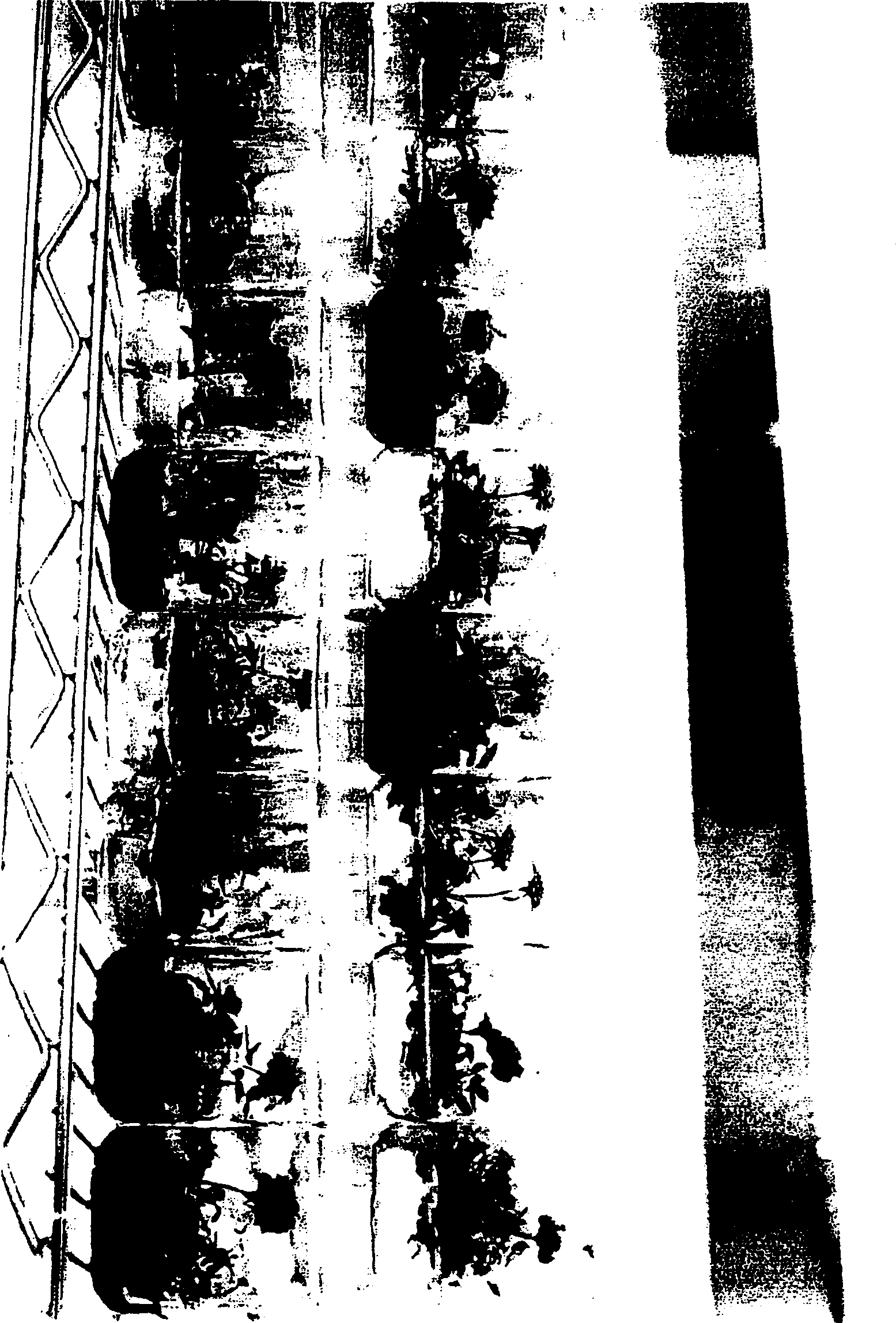Multiplication and in vitro flowering of rose cultivars
A technology of Rosa and Rosa, applied in the fields of plant cultivation, plant asexual reproduction and horticulture
- Summary
- Abstract
- Description
- Claims
- Application Information
AI Technical Summary
Problems solved by technology
Method used
Image
Examples
Embodiment 1
[0064] In this example, adding thidiazuron to the culture medium can enhance the induction of flower buds. Young shoots with axillary buds from mature plants were used as explants. The Rosa explants were placed on a solid medium and cultured under light conditions for 16 hours, and the light intensity was 4500-5500 lux (the light source was provided by a fluorescent lamp). The temperature was 23°C when there was light, and 19°C when there was no light. Whole shoots were cultured on RMS1 medium, the explants gradually turned green, and usually sprouts formed after 10-15 days. Cut the young shoots from the young shoots. Put the propagated seedlings (reproduced more than 2 times) into the RMS 2 medium culture to induce flower buds. After induction of flower buds, plant seedlings are transferred to elongation medium for in vitro flowering. RMS in elongation medium 4 Cultivate the seedlings in the medium for 15-30 days, and then transfer them into MS containing ampicillin at ...
Embodiment 2
[0066] In this example, adding zeatin to the medium can enhance the induction of flower buds. Young shoots with axillary buds from mature plants were used as explants. The Rosa explants were placed on a solid medium and cultured under light conditions for 16 hours, and the light intensity was 4500-5500 lux (the light source was provided by a fluorescent lamp). The temperature was 23°C when there was light, and 19°C when there was no light. Put the propagated seedlings (reproduced more than 2 times) into the RMS 3 medium culture to induce flower buds. After induction of flower buds, directly transfer the seedlings with flower buds into MS containing 20-50mg / L ampicillin 0 make it bloom. Flowering will occur within 15-20 days. 40-50% of the plant seedlings can grow flower buds, and more than 80% of the flower shapes are normal. Unflowered seedlings can be returned to continue breeding. In an environment lower than 25°C, the flowering period of the cultured flowers exceeds...
Embodiment 3
[0068] Plants of Rosa cultivars Holiday PARADE®, Bright Red PARADE®, Bianca PARADE®, Frost White PARADE® were used as explants and grown under the above-mentioned composition and method. Propagation medium RMS5 containing indoleacetic acid instead of naphthaleneacetic acid replaced RMS 1 . More than 30% of the seedlings are propagated, and plant seedlings with normal flower shape can be obtained through the method of in vitro flowering of the present invention.
PUM
 Login to View More
Login to View More Abstract
Description
Claims
Application Information
 Login to View More
Login to View More - R&D
- Intellectual Property
- Life Sciences
- Materials
- Tech Scout
- Unparalleled Data Quality
- Higher Quality Content
- 60% Fewer Hallucinations
Browse by: Latest US Patents, China's latest patents, Technical Efficacy Thesaurus, Application Domain, Technology Topic, Popular Technical Reports.
© 2025 PatSnap. All rights reserved.Legal|Privacy policy|Modern Slavery Act Transparency Statement|Sitemap|About US| Contact US: help@patsnap.com



